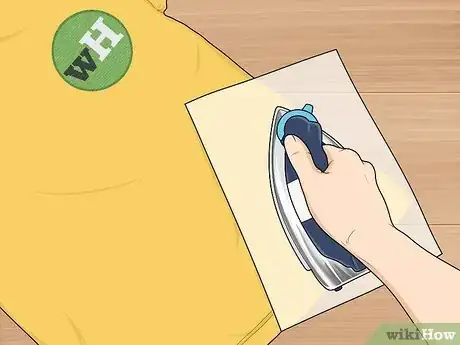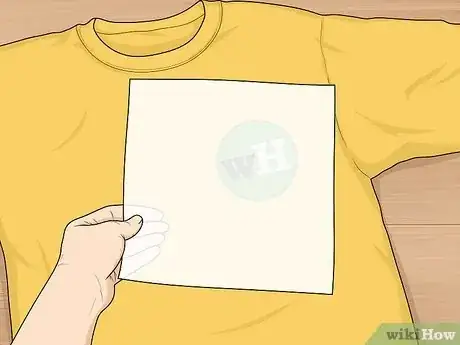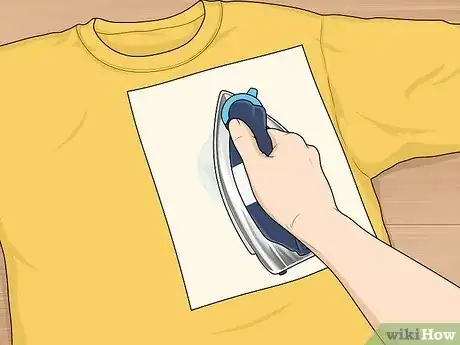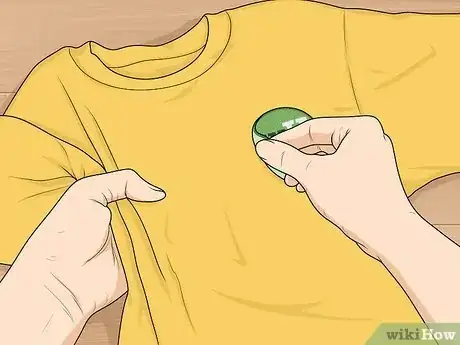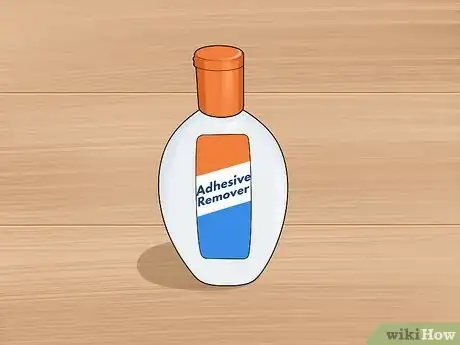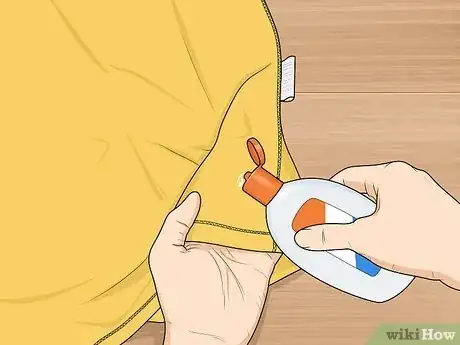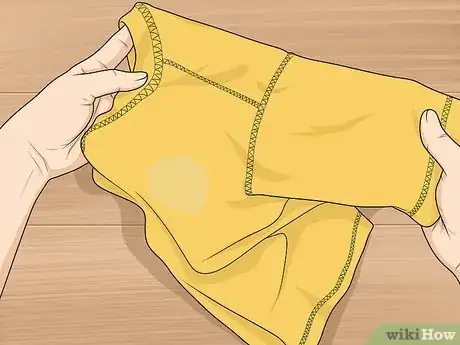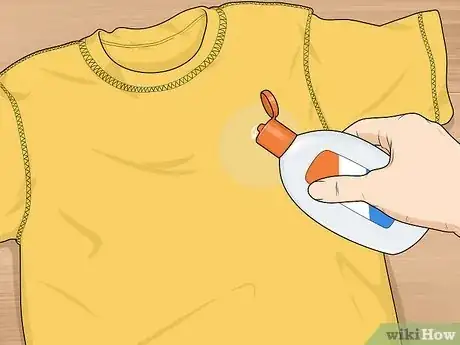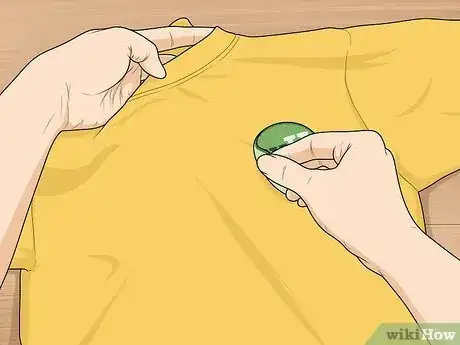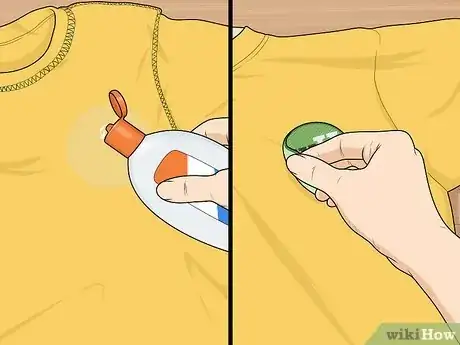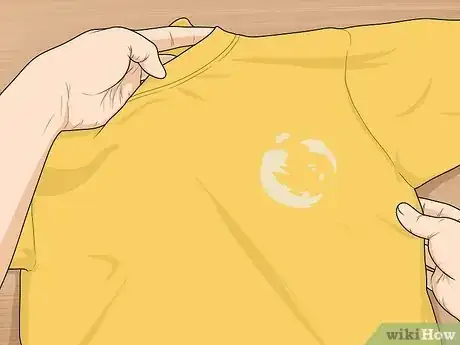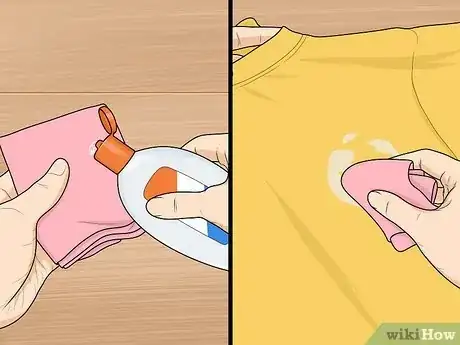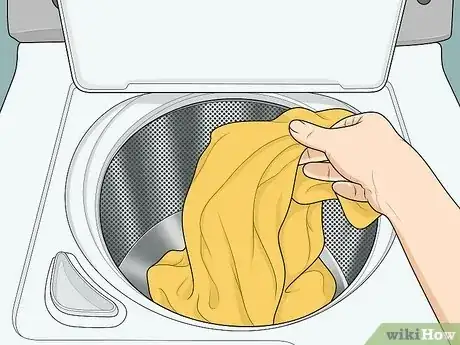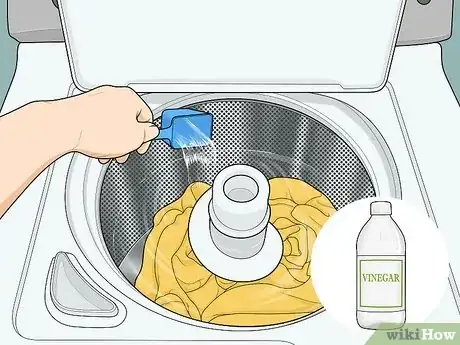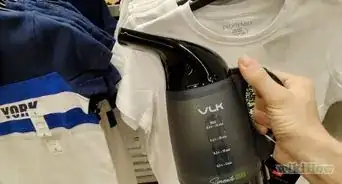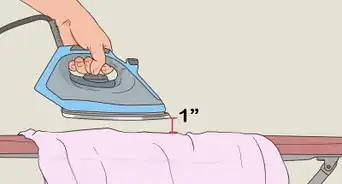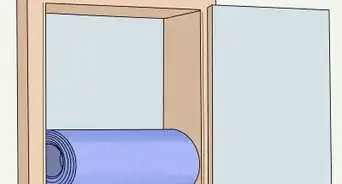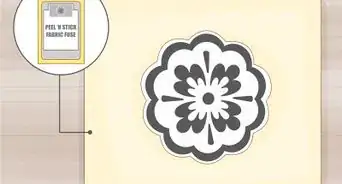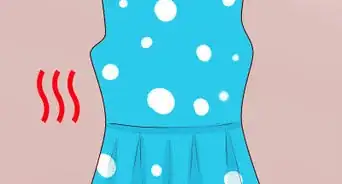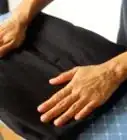This article was co-authored by wikiHow Staff. Our trained team of editors and researchers validate articles for accuracy and comprehensiveness. wikiHow's Content Management Team carefully monitors the work from our editorial staff to ensure that each article is backed by trusted research and meets our high quality standards.
wikiHow marks an article as reader-approved once it receives enough positive feedback. In this case, several readers have written to tell us that this article was helpful to them, earning it our reader-approved status.
This article has been viewed 374,041 times.
Learn more...
Iron-on patches are attached to fabric with a heat-activated or "fusible" adhesive. While these patches are easy to apply, they can be much more difficult to remove. Additionally, removed patches tend to leave behind unsightly glue residue. Luckily, there are a few tricks you can use to remove iron-on patches
Things You Should Know
- Place a piece of wax paper or a thin cloth towel over the patch, iron over it, and then gently remove the patch.
- Apply fabric-safe adhesive remover to the patch (which will loosen the glue), lift the patch, and repeat this process on stubborn, stuck-on portions of the patch.
- Lift leftover residue with more adhesive remover, a wash in the laundry machine, or white vinegar.
Steps
Ironing
-
1Check to see if your item can take the heat. Unless you added the patch yourself, you will first need to make sure your item won't be damaged by ironing it. Not all "iron on" patches are actually applied with heat.
- Pick a small, inconspicuous part of the item not easily visible during normal use.
- Place wax paper or a thin dish towel on top of the area.
- Press down with a pre-heated iron on the small area you're testing. Hold it for about 15 seconds.
- Remove the iron and check for damage or discoloration on your item.
- If you are treating a delicate item, make sure the iron is on the proper setting. If you don't have experience ironing this type of fabric, the adhesive remover method is probably a better idea.
-
2Cover the patch. Position your item so that the cloth part of the patch is exposed. Place either wax paper or a thin cloth towel directly over the patch. Make sure the covering is completely clean and free from any substance that could melt into the fabric of your item.Advertisement
-
3Iron the patch. Pre-heat your iron to its highest setting before use. Press your iron down on top of the paper/cloth where the patch would be. Hold it there for about 15 seconds. Remove the iron and the covering from your item.
- If the glue does not appear to have softened, apply the iron again. Keep adding heat until the adhesive melts.
-
4Peel the patch off. The heat from the iron should be enough to melt the glue and temporarily make it sticky. Lift the edge of the patch up and peel it off of your item.
- Hold onto the item with one hand and peel with your other.
- You can use your fingers to do this, but be cautious, as the adhesive will be hot.
- If you have trouble lifting up the first part of the patch, try using tweezers or a butter knife. Tweezers will be able to slide between the patch and your item and grip the patch well. If you don't have tweezers, slip a butter knife between the patch and your item. Lift up to start the patch and remove the rest of it with your fingers.
- If the patch is large, you may have to make a few passes with the iron. Peel up large patches section by section.[1]
Adhesive Remover
-
1Purchase a fabric-safe adhesive remover. Glue removers that are xylene or orange oil-based work well. Pick a liquid-based product able to soak through fabric. An adhesive remover that comes in a spray bottle will be much easier to work with for this purpose. Common brands are Goo Gone, De-Solv-It, and Goof Off.
- Rubbing alcohol can also be an effective alternative.[2]
-
2Patch test your clothing. Even if the adhesive remover is advertised as fabric safe, it is still possible that it may stain your particular item. You will need to test it out first before using the remover on a patch. Do this over a clean sink to avoid making a mess.
- Find a small, inconspicuous area on your item that is not easily visible during normal use. For example, the inside back bottom edge of a hat or jacket would be a good choice.
- Dab a small amount of adhesive remover onto this spot.
- Work the adhesive remover into the fabric using your fingers or a clean rag.
- Rinse off the adhesive remover and check for discoloration.
-
3Expose the area underneath the patch. If your item is a T-shirt, a hat, or a pair of paints, turn it inside out. You will need to access the fabric that is bonded to the patch. If your item is a canvas bag, simply lay it out flat upside-down.
-
4Apply your adhesive remover. Squirt or pour the glue remover liberally on the back of the cloth. Use enough that is soaks through your item completely. Make sure you cover the whole area behind the patch. Work the remover into the fabric using either your fingers or a clean rag. Wait about one minute for the remover to loosen the patch.
-
5Peel off the patch. The adhesive remover should successfully soften the glue, making it sticky. The patch should now easily come off your item.
- Turn the item right-side-out. Hold it with one hand.
- Grip the edge of the patch between the index finger and thumb of your other hand.
- Pull back to lift the edge of the patch up and off your item.
- Work your way around the patch until it has been entirely peeled away.
-
6Repeat on any stubborn areas. If part of the patch is still stuck to your item, try repeating the process, focusing on the spots where the adhesive did not soften properly.
- Reapply the adhesive remover however many times it takes to completely remove the patch. However, if the glue remover you used has not softened the adhesive at all, you will likely need to try a different one.
- If you don't plan on keeping the patch, trim off what you've already peeled off with a pair of scissors. This will make it much easier to work with and keep the patch from sticking back onto your item.
Removing Residue
-
1Check for stains. The glue from your patch will likely leave a residue behind. If the area where your patch was is now discolored or sticky, you will need to take further action to make your item looking clean and like new again.
- If you used the adhesive remover method, launder your item first. This may remove the adhesive completely on its own.
-
2Apply adhesive remover directly to the residue. Squirt or pour more adhesive remover onto the patch. Massage it in using your fingers or a clean rag. Allow it to work for approximately one minute.
- You can also make your own adhesive remover at home. Just mix two parts baking soda with one part coconut oil and a few drops of orange essential oil.[3] This all natural adhesive remover works well at removing residue but not for removing the patch itself. It is a thick paste that is unable to easily soak through fabrics.
-
3Launder your item as usual. Simply wash your item using whatever method you normally would. Do this as soon as possible to remove the solvent in case it may damage your item over time.
- If the item is machine wash safe, go ahead and throw it into your washing machine with a normal load of laundry.
- Hand soak delicate items using cold or room temperature water with a small amount of detergent.
- If the glue seems especially stuck-on, try scrubbing it with a soft toothbrush after the adhesive remover has been worked in.
- Apply some liquid laundry detergent directly to the residue patch as a pre-treatment.
- If there is still some residue left after you've washed your item, try repeating the process with more adhesive remover. It may take a few tries to totally remove the stain.
- Do not place the item in the dryer until the stain has been completely removed. Doing so may set the stain and make it harder to clean.[4]
-
4Use white vinegar for especially tough stains.[5] White vinegar often works to loosen glue enough for water to rinse it away.
- Before soaking, first try saturating the spot with white vinegar and wash as normal. This works well for delicate items with caked-on glue from the iron method.
- If spot treatment doesn't work, try soaking your item overnight. For white items, you may use undiluted vinegar. To keep colored fabric from bleeding, dilute the vinegar in water using one cup of vinegar per gallon of water.
- While white vinegar is generally safe to use on clothing, always be sure to do a patch test first to be sure.
- Use white vinegar only. Other types may stain clothing.
Expert Q&A
-
QuestionHow do you remove iron-on transfers from clothing?
 Rani GorgisRani Gorgis is a Laundry and Cleaning Specialist and the Owner of Park Blvd Laundry & Dry Cleaners in San Diego, California. With several years of experience in the laundry and cleaning industry, Rani specializes in dry cleaning, wash-n-fold, shirt laundry, and servicing smoke-damaged clothes. He holds a BS in Accounting and a CPA certification.
Rani GorgisRani Gorgis is a Laundry and Cleaning Specialist and the Owner of Park Blvd Laundry & Dry Cleaners in San Diego, California. With several years of experience in the laundry and cleaning industry, Rani specializes in dry cleaning, wash-n-fold, shirt laundry, and servicing smoke-damaged clothes. He holds a BS in Accounting and a CPA certification.
Laundry & Cleaning Specialist Double-check your garment's care label before heating the fabric in the dryer for a few minutes. Then, with a bit of rubbing alcohol or solvent, dab the iron-on transfer with the tips of your fingers or a cotton ball. Let it soak for a bit, and then brush the iron-on transfer using a lint or wire brush. In some cases, it may peel off on its own, and you can scrape it off with a utensil.
Double-check your garment's care label before heating the fabric in the dryer for a few minutes. Then, with a bit of rubbing alcohol or solvent, dab the iron-on transfer with the tips of your fingers or a cotton ball. Let it soak for a bit, and then brush the iron-on transfer using a lint or wire brush. In some cases, it may peel off on its own, and you can scrape it off with a utensil. -
QuestionWhat can I do to remove residual glue left behind by the patches?
 Community AnswerThere is adhesive remover that you can use that's sold in fabric stores.
Community AnswerThere is adhesive remover that you can use that's sold in fabric stores. -
QuestionWhat do I do if my paint was burned by an iron and became patchy?
 Community AnswerIf you iron a painted/printed design, chances are it probably can't be saved.
Community AnswerIf you iron a painted/printed design, chances are it probably can't be saved.
References
- ↑ https://www.youtube.com/watch?v=9z4aemfDdAc
- ↑ http://www.howtocleanstuff.net/how-to-remove-sticker-residue-from-clothing/
- ↑ http://www.diynatural.com/adhesive-remover-homemade-goo-gone/
- ↑ http://www.howtocleanstuff.net/how-to-remove-sticker-residue-from-clothing
- ↑ http://www.sofeminine.co.uk/fashion-daily/how-to-remove-the-toughest-stains-s563791.html
- ↑ http://rhondabracey.com/2009/07/30/cleaning-fusible-glue-off-a-teflon-coated-iron/
About This Article
To remove iron-on patches, start by placing a clean cloth or piece of wax paper over the patch. Then, press down on the patch with a heated iron for 15 seconds, which will melt the glue. After 15 seconds, remove the iron and peel the patch off. If the patch won't come off, reapply the heat until the glue on the patch is melted enough. To learn how to remove leftover residue from an iron-on patch, scroll down!
